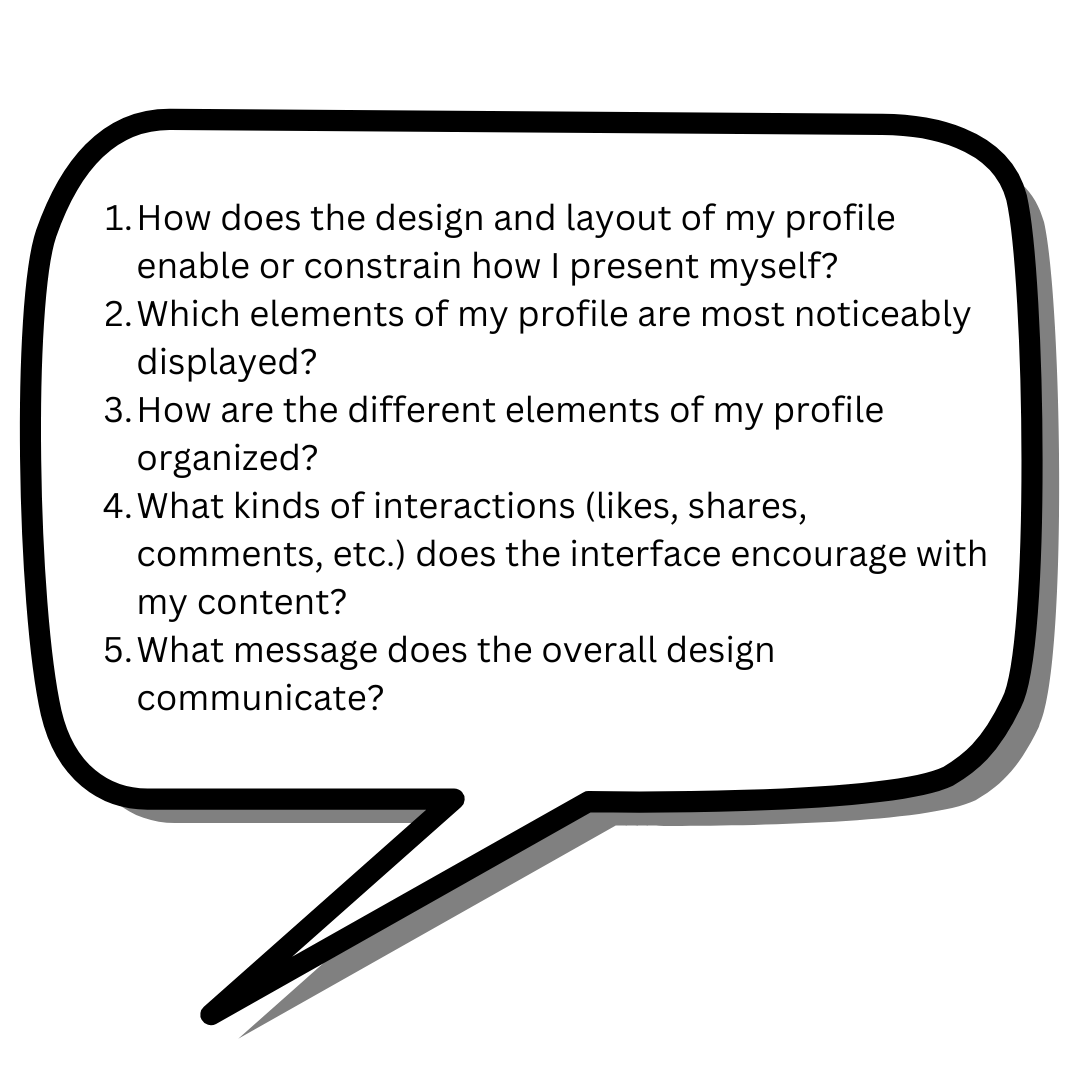With the rise of the Web 2.0 interactive and participatory internet template (Gallagher, 2019), the undervaluing of design and the risk of becoming a product of the template has also risen, a concern shared by Kristin L. Arola (2010). Although online users are able to choose the content (photographs, words, sounds, hyperlinks, etc.) of their posts, they have limited choices for their design, only being able to choose from a set of predetermined layouts and designs. This has initiated a clear separation between content and form. It is this notion of classifying content as the actual substance of the Web and design as not content that has led to the problematic reasoning of design as arhetorical. As many digital rhetoric scholars believe, the medium is the message. While we become increasingly accustomed to a template containing the design (rhetorical) choices already made for us, the template, as Arola (2010) argued, begins to become invisible. This seamless integration into our lives weakens our understanding of how this technology actually works.
To help fill this gap, practitioners and instructors should emphasize to their students that interfaces are indeed rhetorical. Anne Frances Wysocki and Julia I. Jasken (2004) encouraged a more in-depth understanding and mindfulness of interfaces to put an end to the idea that an easy post with predetermined design choices is synonymous with being arhetorical. Rather, it is important to critically examine how Web 2.0 interfaces shape our design choices and interactions.
One way to do this, as Arola (2010) did in her article, is to critically examine the template-driven design choices of our own social media platform interfaces. Go to your profile homepage.


Ask yourself these questions:
- How does the design and layout of my profile enable or constrain how I present myself?
- Which elements of my profile are most noticeably displayed?
- How are the different elements of my profile organized?
- What kinds of interactions (likes, shares, comments, etc.) does the interface encourage with my content?
- What message does the overall design communicate?
These questions help get us started in recognizing form as rhetorical content through an undervalued (but really telling) praxis.